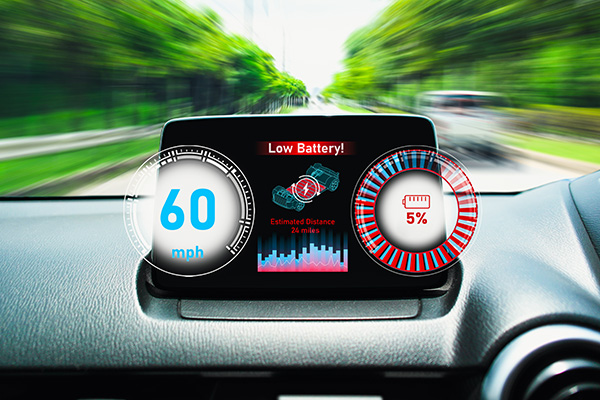
Electric vehicles (EVs) have revolutionized the way we think about driving. With zero emissions, lower operating costs, and cutting-edge technology, they are the future of transportation. However, one concern many EV owners share is range anxiety—the fear of running out of battery before reaching a charging station. While modern EVs offer impressive ranges, every driver wants to squeeze out a few extra miles. So, how can you extend the range of your electric vehicle? We'll share some practical tips that can make a significant difference in your EV's range and overall efficiency.
Understand Your EV's Capabilities
Before you start making adjustments, it's crucial to understand your electric vehicle's capabilities. Each EV model has a specific range, battery capacity, and energy consumption rate, which can vary based on factors like driving style, terrain, and weather conditions. Familiarizing yourself with these details will help you make informed decisions to optimize your EV's performance.
Monitor Your Driving Habits
Your driving style has a significant impact on your EV's range. Aggressive acceleration, frequent braking, and high-speed driving can drain your battery faster than you might expect. By adopting a smoother driving approach, you can conserve energy and extend your vehicle's range. Here are a few tips:
- Accelerate Gradually: Rapid acceleration consumes more energy, so try to accelerate smoothly and steadily.
- Brake Gently: Regenerative braking systems in EVs can recover some energy during braking, but this works best with gentle braking. Anticipate stops and slow down gradually.
- Maintain a Consistent Speed: Driving at a consistent speed, especially on highways, can help optimize your energy use. Utilize cruise control when possible to maintain a steady pace.
Optimize Climate Control Usage
While climate control systems are essential for comfort, they can also be one of the biggest energy drains in an electric vehicle. Heating and air conditioning require a significant amount of power, which can reduce your driving range. Here’s how you can manage climate control more efficiently:
Precondition Your Vehicle
Most modern EVs come with a preconditioning feature that allows you to heat or cool the cabin while the car is still plugged in. By preconditioning your car while it's charging, you can avoid using battery power for climate control during your drive, which conserves energy for the road.
Use Heated Seats Instead of Cabin Heating
If your EV has heated seats, use them instead of cranking up the cabin heater. Heated seats are more energy-efficient and can keep you warm without draining the battery as much as full cabin heating.
Dress for the Weather
This might sound simple, but dressing appropriately for the weather can reduce your need for climate control. Wearing layers in winter or light clothing in summer can help you stay comfortable without relying heavily on your car’s heating or cooling systems.
Plan Your Routes Wisely
Planning your routes can have a substantial impact on your EV's range. Opt for routes with fewer hills, less traffic, and lower speed limits when possible. Here’s how route planning can help:
Avoid Highways When Possible
Driving at high speeds on highways consumes more energy than city driving due to increased air resistance. If you’re not in a rush, taking slower, more direct routes can help conserve battery power.
Use Navigation Systems to Find Charging Stations
Many EVs come equipped with navigation systems that can help you locate charging stations along your route. Knowing where the charging points are allows you to plan your stops efficiently and avoid running low on battery.
Consider Terrain
Driving uphill requires more energy than driving on flat terrain. If possible, plan your routes to avoid hilly areas, especially if your battery is already running low. Similarly, take advantage of downhill stretches to use regenerative braking, which can help recharge your battery.
Maintain Your Electric Vehicle Regularly
Proper maintenance is key to ensuring your EV runs efficiently and achieves its maximum range. Regular check-ups and a few simple maintenance tasks can go a long way in extending your vehicle’s range.
Keep Your Tires Properly Inflated
Under-inflated tires create more rolling resistance, which can decrease your EV's efficiency and range. Check your tire pressure regularly and keep them inflated to the manufacturer’s recommended levels to ensure optimal performance.
Check Your Battery Health
Over time, an EV’s battery can degrade, reducing its capacity and range. While this is a gradual process, regular check-ups can help you monitor your battery’s health. Some manufacturers offer battery maintenance services or software updates that can optimize battery performance.
Reduce Excess Weight
Carrying extra weight in your vehicle requires more energy to move, which can reduce your range. Remove unnecessary items from your car, especially if you’re planning a long trip, to maximize your efficiency.
Use Eco Mode and Regenerative Braking
Most electric vehicles come with various driving modes that can affect energy consumption. Utilizing these modes effectively can help you extend your EV's range.
Engage Eco Mode
Many EVs have an "Eco Mode" or similar setting that optimizes the vehicle’s systems for energy efficiency. This mode typically limits acceleration, reduces climate control intensity, and enhances regenerative braking. While it might slightly reduce performance, it can significantly extend your range, especially during longer trips.
Maximize Regenerative Braking
Regenerative braking is a feature in EVs that allows the car to recover energy when slowing down or stopping. By using this feature effectively—such as coasting to a stop rather than hard braking—you can reclaim some energy that would otherwise be lost, helping to extend your range.
Want to maximize your electric vehicle's efficiency? Let Mancinelli's Auto Repair Center help you keep your EV in top condition. Contact us now to book a service!